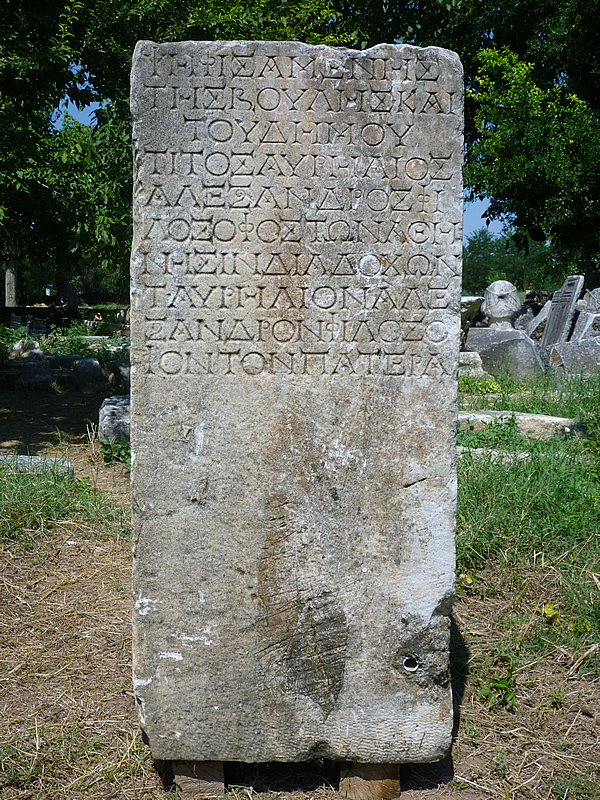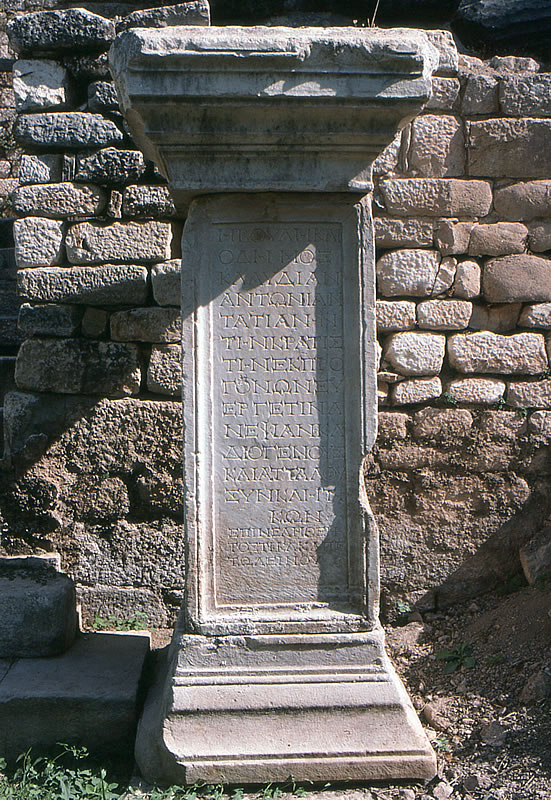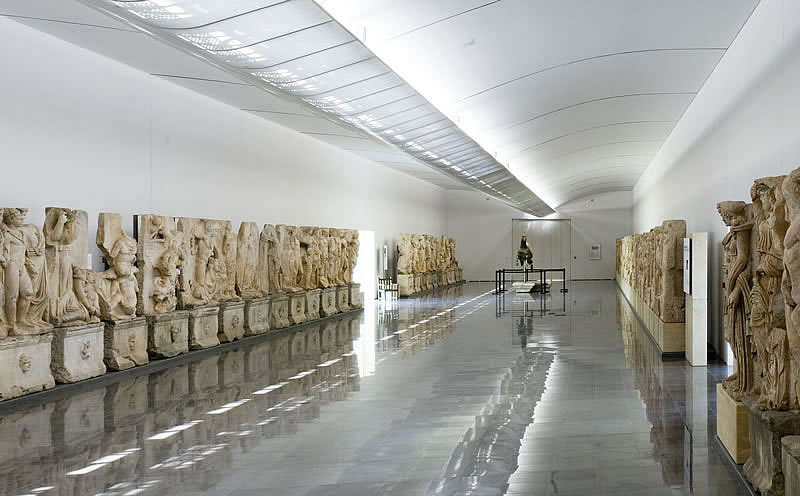Statue Bases
More than 250 inscribed bases that carried portrait statues honouring local citizens survive from Aphrodisias. Most belong in the first and second centuries AD and attest to a vigorous honorific culture in which members of a wealthy local elite engaged their time and money for the public good in return for a range of honours of which a public statue was the highest.
Alexandros. One unusual example comes from a local philosophical family in c. AD 150. The inscribed stone was part of the base for a statue of a local philosopher called T. Aurelius Alexandros which was set up by his famous son, the Aristotelian philosopher known today as ‘Alexander of Aphrodisias’. It reads:
‘In accordance with a decree of the council and people, Titus Aurelius Alexandros, a philosopher, one of the Diadochs at Athens (honoured) Titus Aurelius Alexander, a philosopher, his father.’
‘One of the Diadochs’ or ‘Successors’ means that the son held the chair of philosophy at the school, the Lyceum, founded by Aristotle in Athens. He has arranged through the proper channels for his father to receive a public statue in his hometown Aphrodisias, and it is clear that while his chair was in Athens, he also maintained close ties with his hometown in Asia.
Found at: Karacasu
Tatiane. Another base exemplifies how wealthy women also participated in the honorific culture of their cities. In c. AD 200, Claudia Antonia Tatiane was honoured with a statue at the entrance to the Council House, where its base remains in situ. Its text reads:
‘The Council and the people (honoured) Claudia Antonia Tatiane, egregia femina, their benefactress as were her ancestors, cousin of Claudius Diogenes and Claudius Attalos, senators. Tib(erius) Cl(audius) Kapitoleinos supervised (the erection of the statue).’
Tatiane is honoured for her wealth and rank, a longstanding career of good deeds, and for her powerful family connections – two of her cousins have reached the political summit, the Roman senate. The lettering of the text is of the finest quality. The base is 2.00m high, and with the statue (which also survives) the whole monument was 4.50m high and one of the grandest honours in town. Women received about 15% of all such statue honours for local citizens.
Found at: Council House (Bouleuterion)
See also: Dometeinos and Tatiane






